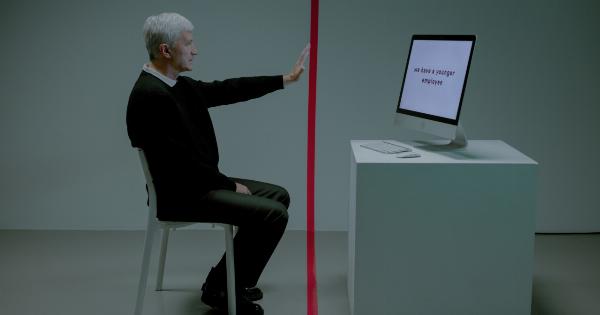Pulmonary arterial hypertension (PAH) is a chronic and progressive condition characterized by high blood pressure in the pulmonary arteries. This condition affects the heart and lungs, limiting blood flow and oxygenation throughout the body.
Living with PAH can be challenging, as it often leads to significant fatigue and breathlessness. However, with proper management and lifestyle adjustments, individuals with PAH can improve their quality of life and overcome these symptoms.
Understanding Pulmonary Arterial Hypertension
PAH is a rare and serious condition that primarily affects the small blood vessels in the lungs. It occurs when the walls of these blood vessels become thick and stiff, leading to increased resistance and elevated blood pressure.
This, in turn, places strain on the right side of the heart, causing it to work harder to pump blood through the narrowed blood vessels.
There are several types of PAH, including idiopathic (unknown cause), hereditary, and associated with other medical conditions such as connective tissue disorders or congenital heart disease.
Regardless of the cause, the symptoms and challenges faced by individuals with PAH are similar.
Symptoms of PAH
PAH often presents with the following symptoms:.
1. Fatigue and weakness: Decreased oxygen supply to the body’s tissues can lead to persistent fatigue, weakness, and a general lack of energy.
2. Shortness of breath: Difficulty breathing, particularly during physical activity, is a common symptom of PAH. As the condition progresses, breathlessness may also occur at rest.
3. Chest pain: Some individuals experience chest discomfort or pain, which can be a result of the heart working harder to pump blood through the narrowed blood vessels.
4. Dizziness and fainting: Decreased blood flow to the brain can cause dizziness, lightheadedness, and fainting.
5. Swollen ankles and legs: PAH can lead to fluid retention in the lower extremities, causing swelling (edema) in the ankles and legs.
6. Bluish lips and skin: In severe cases, PAH may cause a bluish tint to the lips, skin, and nails (cyanosis) due to decreased oxygen levels in the blood.
Managing Fatigue and Breathlessness
Living with fatigue and breathlessness can significantly impact one’s daily life. However, there are several strategies and lifestyle adjustments that can help individuals with PAH manage these symptoms:.
1. Medication
PAH is typically managed with a combination of medications, including vasodilators, endothelin receptor antagonists, and prostaglandins. These medications help widen the blood vessels, reduce pressure on the heart, and improve blood flow.
It is essential to adhere to the prescribed treatment plan and communicate any concerns or side effects with a healthcare provider.
2. Oxygen Therapy
In cases where oxygen levels in the blood are low, supplemental oxygen therapy may be prescribed. This involves using a portable oxygen concentrator or oxygen tank to increase oxygen levels and alleviate breathlessness.
3. Pulmonary Rehabilitation
Pulmonary rehabilitation programs provide tailored exercise, education, and support for individuals with PAH. These programs can improve physical endurance, reduce symptoms, and enhance overall well-being.
Consult with a healthcare provider to find a suitable pulmonary rehabilitation program.
4. Energy Conservation
Managing fatigue requires being mindful of energy levels and conserving energy throughout the day. Prioritize activities, delegate tasks when possible, and take regular rests to prevent exhaustion.
5. Balanced Diet
Eating a nutrient-rich, balanced diet can improve overall health and energy levels. Focus on consuming fruits, vegetables, whole grains, lean proteins, and healthy fats. Limit intake of processed foods, refined sugars, and excessive sodium.
6. Regular Exercise
Engaging in regular exercise can enhance physical fitness, improve circulation, and boost energy levels. Consult with a healthcare provider to develop a safe exercise plan that suits individual abilities and limitations.
7. Stress Management
Stress can worsen symptoms of PAH. Utilize stress management techniques such as deep breathing exercises, meditation, yoga, or engaging in hobbies and activities that promote relaxation and well-being.
8. Adequate Rest and Sleep
Prioritize getting enough rest and quality sleep. Establish a regular sleep routine, create a comfortable sleep environment, and consider utilizing relaxation techniques to promote better sleep.
9. Support System
Having a strong support system can make a significant difference in managing the challenges of PAH. Connect with others who have PAH through support groups or online communities to share experiences, seek advice, and find emotional support.
10. Regular Medical Check-ups
Regular appointments with a healthcare provider are crucial in monitoring the progression of PAH and making any necessary adjustments to the treatment plan.
Keep a record of symptoms, medication side effects, and any concerns to discuss at these check-ups.
Conclusion
Living with pulmonary arterial hypertension can be challenging due to the presence of persistent fatigue and breathlessness. However, by following a comprehensive management plan, individuals with PAH can significantly improve their quality of life.
It is essential to work closely with healthcare providers, adhere to medication regimens, implement lifestyle adjustments, and seek support to effectively manage symptoms and overcome the challenges faced.






























